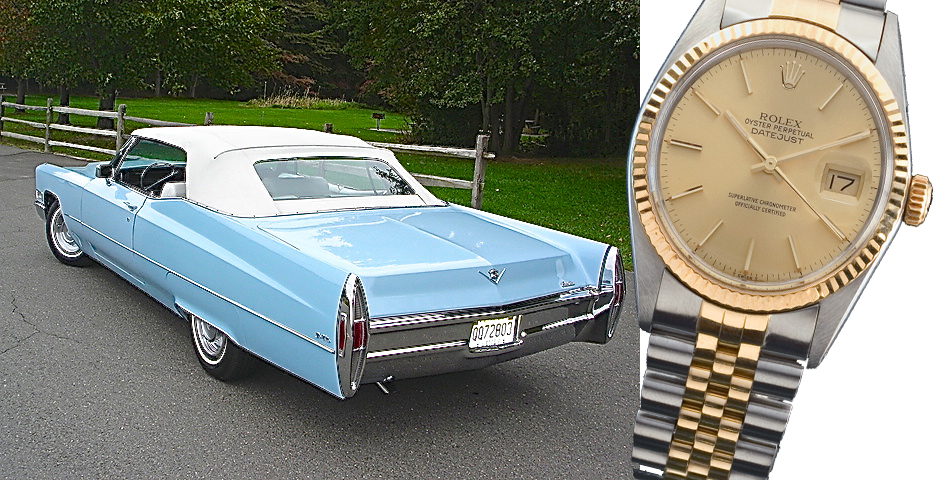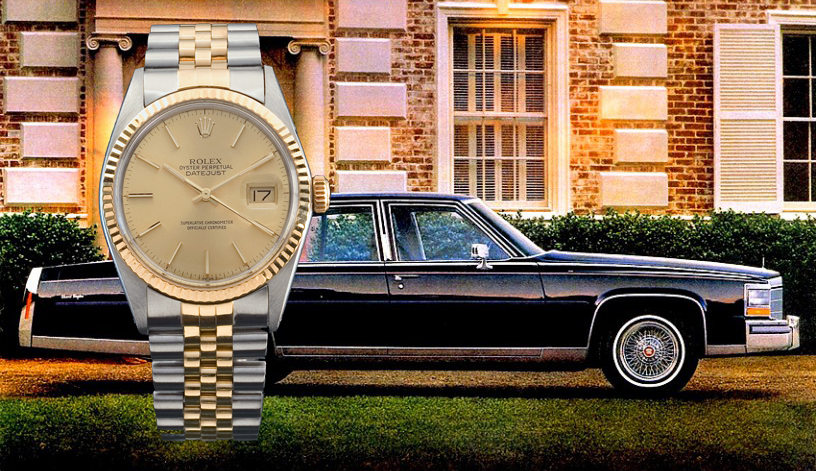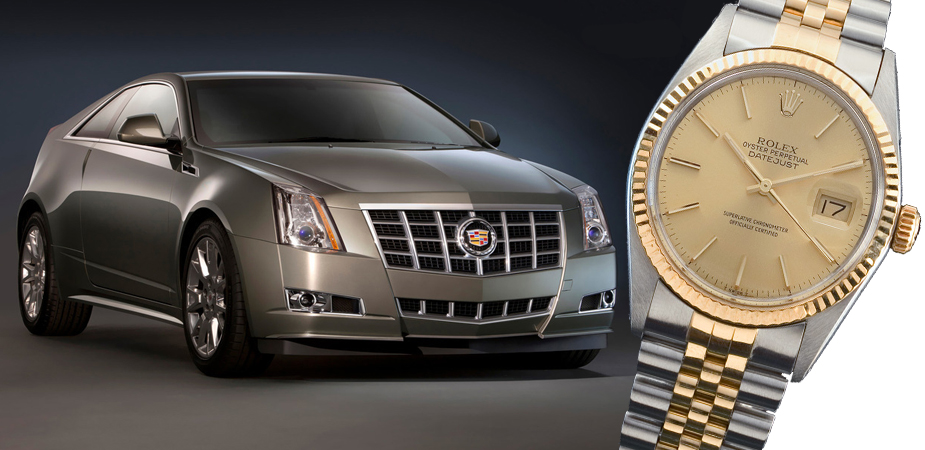
1968 Cadillac with more refining on the body style. Elimination of the radical fender fins. New Colors. Classic Rolex “two-tone” Datejust . Continuation of a winning design.

1974 Cadillac with more refining and streamlining. New Colors and new appointments.. Classic Rolex “two-tone” Datejust . Continuation of a winning design.

1980 Cadillac. Exploring new design directions. Much more refined and aerodynamic. Interesting luxury colors. Classic Rolex “two-tone” Datejust . Continuation of a winning design.

1986 Cadillac, Still long and luxurious, but now refined for better gas mileage. Classic Rolex “two-tone” Datejust . Continuation of a winning design.

2006 Cadillac. Sportier and more European design looks. Classic Rolex “two-tone” Datejust . Continuation of a winning design.

2010 Cadillac. Design more futuristic and aerodynamic for better mileage and less drag. Classic Rolex “two-tone” Datejust . Continuation of a winning design (sic).

2013 Cadillac. Completely unrecognizable from its 1959 ancestor. Modern, sleek, futuristic. Classic Rolex “two-tone” Datejust . Waking up next to the same face.
Of course, many of you will say, “If it isn’t broken, then don’t fix it.” Why screw with a design that works and is still popular? The DateJust is king,” etc… One thing that is interesting is how the Datejust watch looks relevant and tasteful next to each of these Cadillacs, but in a slightly different manner alongside each different car. Another response is that it is time to move on, look towards the future and let’s upgrade the design of the Datejust. Rolex could create a whole new quintessential Datejust (though they did increase the size with the Datejust II). Time marches on…
Richard Paige, a fourth generation watchmaker, is the former owner and co-founder of Timezone.com, and several watch retail stores in California. Currently Richard has designed and manufactured his own line of watches using antique and vintage American Pocket watch movements: rpaigewatch.com